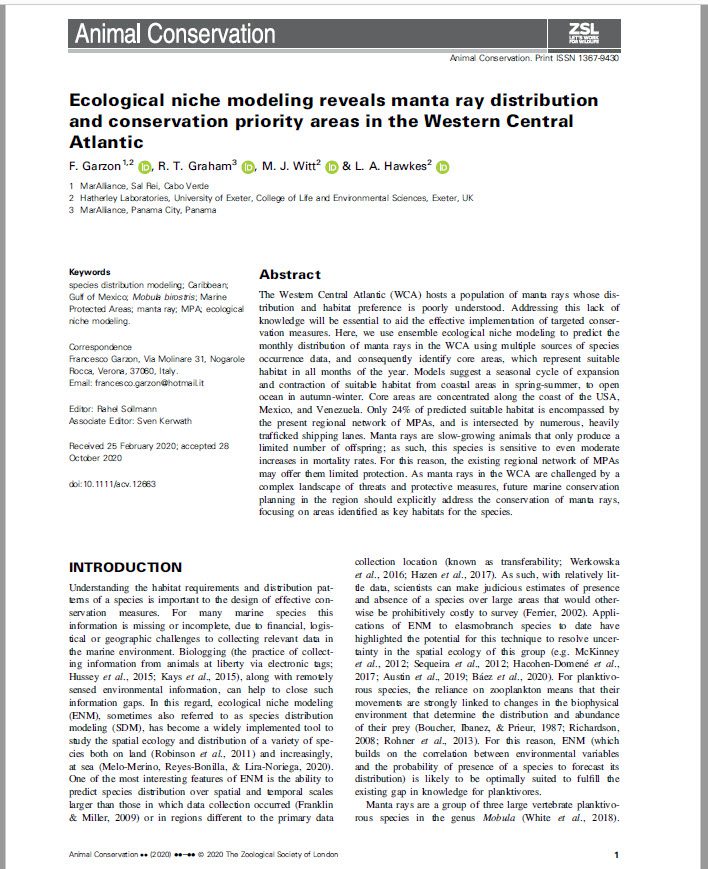The Western Central Atlantic (WCA) hosts a population of manta rays whose dis- tribution and habitat preference is poorly understood. Addressing this lack of knowledge will be essential to aid the effective implementation of targeted conser- vation measures. Here, we use ensemble ecological niche modeling to predict the monthly distribution of manta rays in the WCA using multiple sources of species occurrence data, and consequently identify core areas, which represent suitable habitat in all months of the year. Models suggest a seasonal cycle of expansion and contraction of suitable habitat from coastal areas in spring-summer, to open ocean in autumn-winter. Core areas are concentrated along the coast of the USA, Mexico, and Venezuela. Only 24% of predicted suitable habitat is encompassed by the present regional network of MPAs, and is intersected by numerous, heavily trafficked shipping lanes. Manta rays are slow-growing animals that only produce a limited number of offspring; as such, this species is sensitive to even moderate increases in mortality rates. For this reason, the existing regional network of MPAs may offer them limited protection. As manta rays in the WCA are challenged by a complex landscape of threats and protective measures, future marine conservation planning in the region should explicitly address the conservation of manta rays, focusing on areas identified as key habitats for the species.
F. Garzon1,2 , R. T. Graham3 , M. J. Witt2 & L. A. Hawkes2

